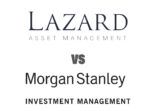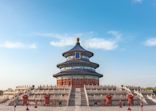China has exerted a major drag on emerging market indices over the past two years. First, state interference in its high value internet companies pushed markets lower, then its stringent lockdowns, and finally its lacklustre reopening. The past 12 months have seen a series of launches of emerging market funds that strip out China. Might this separation be a better way to approach emerging markets?
The MSCI China index is down 16.82% for the year to 30 June, compared to a rise of 1.75% for the MSCI Emerging Markets index and a rise of 12% for the MSCI Emerging Markets ex China index. It is tempting to conclude that without the dead weight of China, emerging markets would be flying.
However, it is not just a performance consideration – after all, before its current run of weakness, China undoubtedly contributed to emerging market performance. The dominance of China in emerging market indices has been a problem for some time. The MSCI Emerging Markets has around 30% in China today, though it has been higher. Equally, the index became increasingly dominated by a handful of high profile companies – particularly Tencent, Alibaba and TSMC.
This created a diversification issue. Investors were almost certainly heavily weighted to technology in their global portfolios through the US technology sector, while their emerging market portfolio was offering the same kind of exposure. For active fund managers in emerging markets, it created a binary choice, with their performance largely dictated by their weighting in China.
James Klempster, deputy head of multi-asset at Liontrust, says: “Lots of China funds were launched, when investors already had a high weighting in China through their emerging markets funds. Either way, their only choice was more China, with all the idiosyncratic risk that created.” He says that from a portfolio constructor’s point of view, the recent launch of a series of Emerging markets ex China funds are welcome, allowing a more nuanced approach.
There are now a series of ETFs based on the MSCI Emerging Markets ex China index, with the largest ETF from iShares. There are also active funds from Invesco, BlackRock, Baillie Gifford, Federated Hermes and Fidelity. There are also now sustainable versions available both on the active and passive sides.
Managing concentration risk
Mark Preskett, senior investment consultant and portfolio manager at Morningstar, says these funds are a useful option even if he isn’t using them at the moment: “Currently, we don’t want to ex-out China. China is extremely cheap and it is the second largest economy in the world. It’s still growing stronger than most of developed markets and it doesn’t have an inflation problem. There are geopolitical risks, but it’s a large part of the index and a dominant factor.
“Then there are the trade links, so when we look at the cross-correlations with Latin America, there are significant dependencies there. So we’re still patiently overweight Asia and EM, we’re looking closely at concentration risk and maybe EM ex China is a way to deal with that. It’s the one industry trend that we can see in recent launches. The headline-grabbing element is that it’s a geopolitical risk problem, but actually it’s just a concentration risk problem.”
Fan Cheuk Wan, chief investment officer for Asia, HSBC Global Private Banking and Wealth, adds: “China’s significant weight in the emerging markets benchmark not only has an overwhelming impact on the performance of the entire emerging markets asset class, it also overshadows attractive investment opportunities in other smaller emerging markets.”
However, he also believes the separation can be valuable because it allows a more dedicated focus on China: “China’s dominant size in the emerging economy together with its vast diversity and ample alpha opportunities prompts an increasing number of long-term investors to implement a dedicated strategic asset allocation to China as a separate asset class. IMF forecasts China will account for 20% of global GDP by 2027 and it is is currently the world’s largest market for ecommerce, electric vehicles, renewable energy, industrial robots and luxury goods.”
They are seeing considerable demand from clients for a separate allocation to China: “For instance, within EM Asia, we see increasing client interest in the diversification opportunities beyond China by adding allocation to India and Asean. Demand for separate allocation to China versus emerging markets ex-China is also driven by the unsynchronised economic and policy cycles between China and the rest of emerging and developed markets.”
Another option is to bolster other emerging markets to add some balance. This is how Preskett has approached it for the Morningstar portfolios: “We do want access to some of the other growth stories across emerging markets – Brazil, South Africa, eastern Europe. These are countries that have been very aggressive on their rate rises. They’re looking far more likely to reduce rates because they are taming inflation. If you can start cutting rates from 12%, there’s a big currency kicker there. We’ve been playing it through dedicated exposure to LatAm, Brazil and Korea. Korea has similar drivers to China, but better governance standards.”
That said, there are signs that China may not exert the same sway over emerging market performance as it has historically. Varun Laijawalla, co-portfolio manager for the Emerging Markets Equity Strategy and Emerging Markets ex China Equity strategies at Ninety One, has looked at the market returns for the major regions over the last 10 years, breaking them down by their various constituents – revaluation, FX change, margin growth and net issuance. In the US, all five drivers added value, whereas in emerging markets net issuance proved to be a significant detractor.
“The net issuance in China was enormous. All of the weakness investors are seeing in emerging markets has come from net issuance and over 100% of that drag comes from China.” Net issuance is dilutive to index returns. It is the reverse of buybacks, which increases earnings per share because the denominator (the number of shares) reduces.
Laijawalla says: “In 2016/2017 a number of IPOs came to the Chinese market. They came to the market on high price-to-earnings at a time when the market price to earnings ratio was very low. The problem was that cohort of companies – the biggest in the index – over the last eight years has derated significantly. Multiples for the internet companies have halved. That is an immensely dilutive index event. The relevant question with emerging markets is will this net issuance drag continue?” He believes the early signs are that this is moving in the right direction.
There are strong arguments for separating Chinese exposure, both from a concentration risk point of view and to allow a greater focus on the opportunities within China. It may be a trend that catches on as China grows.
This story first appeared on our sister publication, Portfolio Adviser.

















